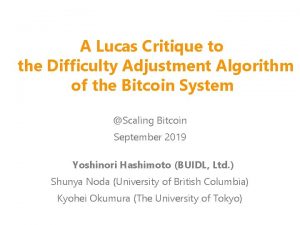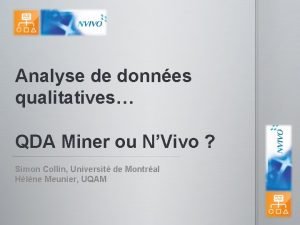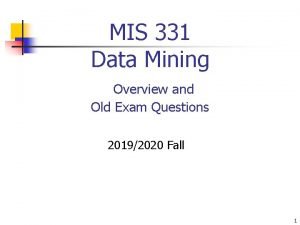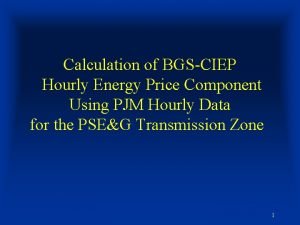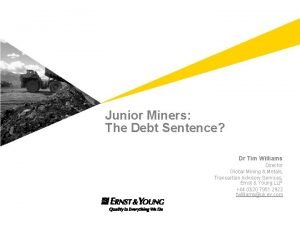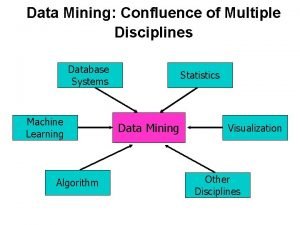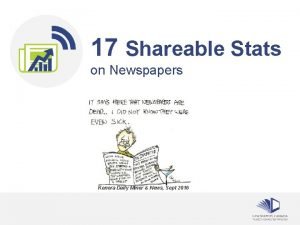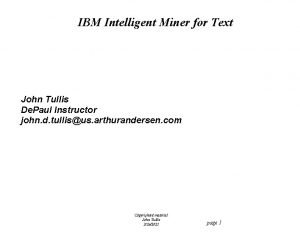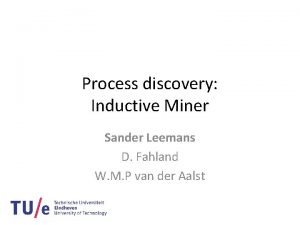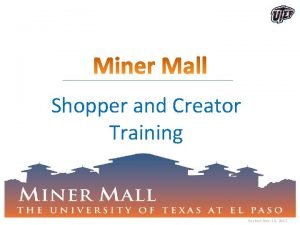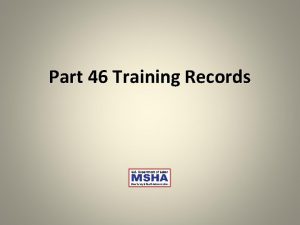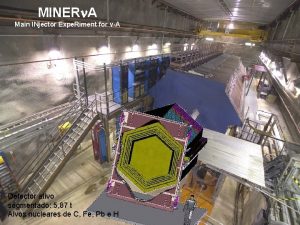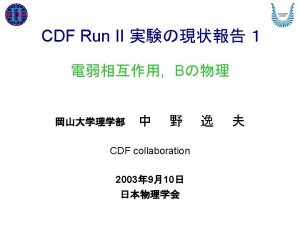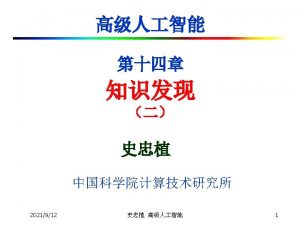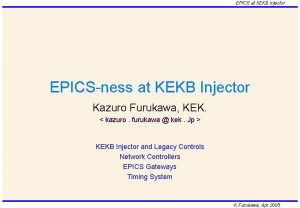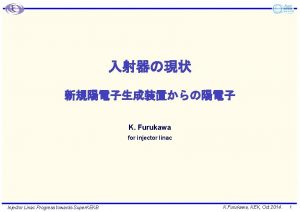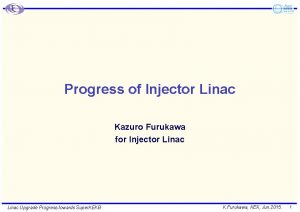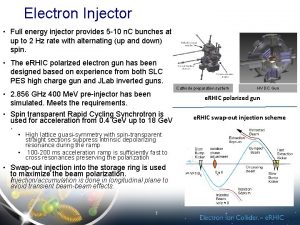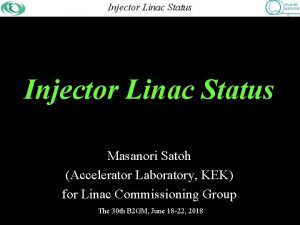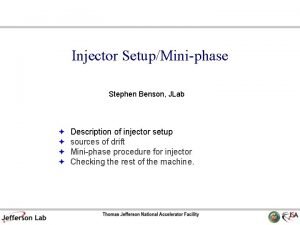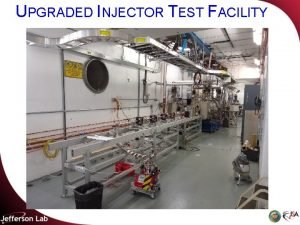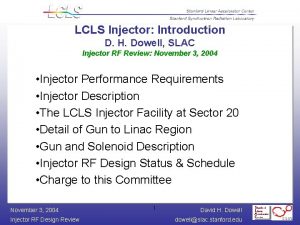MINER A Main INjector Expe Riment A A















- Slides: 15

MINER A (Main INjector Expe. Riment -A) A High-Statistics Neutrino Scattering Experiment Using an On-Axis, Fine-grained Detector in the Nu. MI Beam Quantitative Study of Low-energy n - Nucleus Interactions PANIC 2005 25 October 2005 Jorge G. Morfín Fermilab

What are the Open Questions in Neutrino Physics From the APS Multi-Divisional Study on the Physics of Neutrinos What are the masses of the neutrinos? What is the pattern of mixing among the different types of neutrinos? Are neutrinos their own antiparticles? Do neutrinos violate the symmetry CP? Are there “sterile” neutrinos? Do neutrinos have unexpected or exotic properties? What can neutrinos tell us about the models of new physics beyond the Standard Model? The answer to almost every one of these questions involves understanding how neutrinos interact with matter! Among the APS study assumptions about the current and future program: “determination of the neutrino reaction and production cross sections required for a precise understanding of neutrino-oscillation physics and the neutrino astronomy of astrophysical and cosmological sources. Our broad and exacting program of neutrino physics is built upon precise knowledge of how neutrinos interact with matter. ” 2

What MINER A will deliver! MINERv. A is a compact, fully active neutrino detector designed to study neutrinonucleus interactions with unprecedented detail. The MINERv. A detector will be placed in the high intensity Nu. MI beam line that provides: t opportunity for precision neutrino C, Fe and Pb interaction measurements Nuclear targets t a wide range of neutrino energies The MINERv. A Detector, with several different nuclear targets, allows first study of neutrino induced nuclear effects MINERv. A will provide crucial input to current and future oscillation measurements n p 0 production 3

The MINER A Detector Active core: ~6 t segmented solid scintillator t t t Core surrounded by em and hadronic calorimeters t Tracking (including low p recoil protons) Particle identification 3 ns (RMS) per hit timing (track direction, identify stopped K±) 3. 3 cm active detector HCAL Photon (p 0) & hadron energy measurement MINOS Near Detector as muon spectrometer nuclear targets ECAL 4

Event Rates 13 Million total CC events in a 4 - year run Assume 16. 0 x 1020 in LE and ME Nu. MI beam configurations in 4 years Fiducial Volume = 3 tons CH, ≈ 0. 5 t C, Fe and Pb Expected CC event samples: 8. 6 M n events in 3 tons of CH 1. 5 M n events in C 1. 5 M n events in Fe 1. 5 M n events in Pb Main CC Physics Topics (Statistics in CH) Quasi-elastic Resonance Production Transition: Resonance to DIS, Structure Funcs. and high-x PDFs Coherent Pion Production Strange and Charm Particle Production Generalized Parton Distributions Nuclear Effects 0. 8 M events 1. 6 M total 2 M events 4. 1 M DIS events 85 K CC / 37 K NC > 230 K fully reconstructed events order 10 K events C: 1. 5 M, Fe: 1. 5 M and Pb: 1. 5 M 5

The MINER A Scattering Physics Program Quasi-elastic Resonance Production - 1 pi Resonance/transition Region - npi resonance to DIS Deep-Inelastic Scattering Coherent Pion Production Strange and Charm Particle Production s. T , Structure Functions and PDFs t t s(x) and c(x) High-x parton distribution functions Nuclear Effects Generalized Parton Distributions 6

MINER A CC Quasi-Elastic Measurements 800 K events Precision measurement of s(E ) and ds/d. Q important for neutrino oscillation studies. Precision determination of axial vector form factor (FA), particularly at high Q 2 Study of proton intra-nuclear scattering and their A-dependence (C, Fe and Pb targets) Fully simulated analysis, - realistic detector simulation and reconstruction Average: eff. = 74 % and purity = 77% Expected Mini. Boo. NE and K 2 K measurements 7

Coherent Pion Production 85 K CC events Precision measurement of s(En) important for neutrino oscillation appearance studies. Rein-Seghal Paschos. Kartavtsev MINER A Expected Mini. Boo. Ne and K 2 K measurements MINERn. A’s nuclear targets allow the first measurement of the A-dependence of scoh across a wide A range K 2 K Sci. Bar measurement published: Expect 470 CC coherent a la R-S Find 7. 6 ± 50. 4 8

Nuclear Effects Difference between -A and m-A nuclear effects With neutrinos, shadowing is allowed at much lower- , via the axial-vector coupling as shown by Boris Kopeliovich at Nu. Int 04: Lc = 2 / (mp 2 + Q 2) ≥ RA (not m. A 2) Lc 100 times shorter with mp allowing low -low Q 2 shadowing Only measurable via neutrino-nucleus interactions. MINERn. A WILL MEASURE THIS ACROSS A WIDE AND Q 2 RANGE WITH C : Fe : Pb Sergey Kulagin 9

Who is MINER A? The MINER A Collaboration Experts from two communities - door is still open D. Drakoulakos, P. Stamoulis, G. Tzanakos, M. Zois University of Athens, Greece G. Blazey, M. A. C. Cummings, V. Rykalin Northern Illinois University, De. Kalb, Illinois D. Casper, J. Dunmore, C. Regis, B. Ziemer University of California, Irvine, California S. Boyd, D. Naples, V. Paolone University of Pittsburgh, Pennsylvania E. Paschos University of Dortmund, Germany L. Aliaga, J. L. Bazo, A. Gago, Pontificia Universidad Catolica del Peru, Lima, Peru D. Boehnlein, D. A. Harris, M. Kostin, J. G. Morfin, A. Pla-Dalmau, P. Rubinov, P. Shanahan, P. Spentzouris Fermi National Accelerator Laboratory, Batavia, Illinois A. Bodek, R. Bradford, H. Budd, J. Chvojka, P. de Babaro, S. Manly, K. Mc. Farland, J. Park, W. Sakumoto University of Rochester, New York M. E. Christy, W. Hinton, C. E. Keppel Hampton University, Hampton, Virginia R. Gilman, C. Glasshausser, X. Jiang, G. Kumbartzki, K. Mc. Cormick, R. Ransome Rutgers University, New Brunswick, New Jersey R. Burnstein, O. Kamaev, N. Solomey Illinois Institute of Technology, Chicago, Illinois S. Kulagin Institute for Nuclear Research, Moscow, Russia I. Niculescu. G. . Niculescu James Madison University, Harrisonburg, Virginia W. K. Brooks, A. Bruell, R. Ent, D. Gaskell, , W. Melnitchouk, S. Wood Jefferson Lab, Newport News, Virginia A. Chakravorty Saint Xavier University, Chicago, Illinois H. Gallagher, T. Kafka, W. A. Mann, W. Oliver Tufts University, Medford, Massachusetts R. Ochoa, O. Pereyra, J. Solano Universidad Nacional de Ingenieria. Lima, Peru J. Nelson, F. X. Yumiceva William and Mary College, Williamsburg, Virginia Red = HEP, Blue = NP, Black = Theorist 10

Cost Summary Obligation Profile Summaries (Base + Contingency + Indirect M$), excludes already expended FY 05 funds, 0. 8 M$ 11

MINER A Status MINER A has Fermilab Stage 1 Approval MINER A has successfully undergone a first Director’s Review Fermilab has repeatedly shown itself to be solidly committed to MINER A t MINER A is a firmly established project at Fermilab has been generous in their support of MINERv. A R&D We t expect construction funds from ~11/2006 – ~10/2008 We are prototyping the “factory” setup now through Sept. 2006 We are on track for first physics quality data at the end of 2008 12

Summary The MINER A experiment brings together the expertise of the HEP and NP communities to study low-energy -A physics. MINER A will accumulate significantly more events in important exclusive channels across a wider E range than currently available as well as a huge sample of DIS events. With excellent knowledge of the beam, s will be well-measured. With C, Fe and Pb targets MINER A will undertake a systematic study of nuclear effects in -A interactions, known to be different than well-studied e-A channels. MINER A results will dramatically improve the systematic errors of current and future neutrino oscillation experiments. MINERn. A has Stage I approval and is an established Fermilab project, with an evolving (Fermilab/DOE) funding scenario, that should be completed in Fall of 2008 with physics data-taking starting end CY 2008 or start of CY 2009. 13

Generalized Parton Distribution Functions Weak Deeply Virtual Compton Scattering m- n W> 2 Ge. V, t small, Eg large Exclusive reaction g W+ p First measurement of GPDs with neutrinos Weak DVCS would allow flavor separation of GPDs According to calculation by A. Psaker (ODU), MINER A would accumulate 10, 000 weak DVCS events in a 4 -year run 14

How MINER A Would Help NO A/T 2 K Total fractional error in the predictions as a function of Near Detector off-axis Angle Current Accuracy of Low-energy Cross-sections DQE = 20% DRES = 40% DDIS = 20% DCOHFe = 100% With MINER A Measurements of s DQE = 5% DRES = 5, 10% (CC, NC) DDIS = 5% DCOHFe = 20% 15

